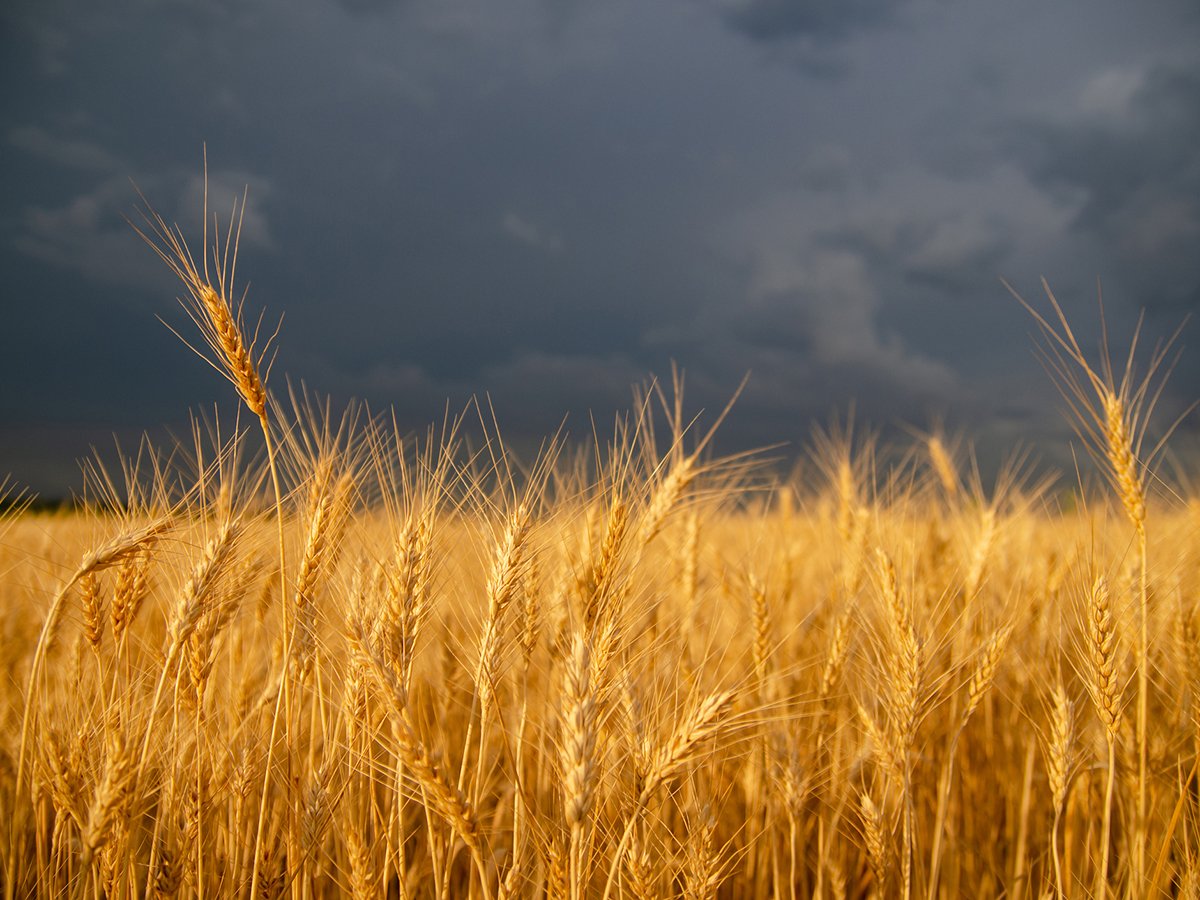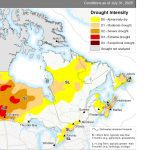Fruit and veggie pizzas
Raw vegetable pizza
For a quick and cool summer meal, make a vegetable pizza. The raw vegetables are put on a layer of cream cheese and dressing and topped with cheese. The crust can be prebaked and frozen.
Crust:
2 cups flour 500 mL
4 teaspoons 20 mL
baking powder
1 teaspoon salt 5 mL
Sift together and cut in:
1Ú2 cup shortening 125 mL
Add:
1 cup milk 250 mL
Stir with a fork to make a soft dough. Turn dough onto a lightly floured surface and knead gently 10 times. Press onto a lightly greased cookie sheet. Bake at 425 F (220 C) for 12-15 minutes, until lightly browned.
Read Also

Late season rainfall creates concern about Prairie crop quality
Praying for rain is being replaced with the hope that rain can stop for harvest. Rainfall in July and early August has been much greater than normal.
Cool and then wrap and freeze or add the following toppings.
A quick option for the crust is to use two packages of Pillsbury crescent rolls, lay them out on the cookie sheet and press together to form a crust. Bake and then add toppings.
Topping
1 package (8 oz.) 250 mL
cream cheese, low fat
if desired
3 tablespoons salad 45 mL
dressing (cucumber,
ranch or caesar)
1Ú2 cup sour cream 125 mL
2 tablespoons milk 30 mL
Blend together well, until smooth and creamy. Spread on chilled crust.
Top with bite-sized chunks of raw vegetables such as cauliflower, broccoli, cucumber, carrots, red and green pepper. Garnish with one cup (250 mL) grated cheddar cheese.
Refrigerate, then slice into squares and serve. Cover and refrigerate any leftovers.
Fruit pizza
As with the vegetable pizza this crust can be made on a cool day and frozen or refrigerated for later use.
1Ú2 cup butter or 125 mL
margarine
1Ú4 cup icing sugar 50 mL
1 cup flour 250 mL
Mix and press onto a pizza pan. Bake at 350 F (180 C) for 10 minutes. Cool.
Cream together:
1 package cream 250 mL
cheese
1Ú3 cup white sugar 75 mL
1 teaspoon vanilla 5 mL
Spread on cooled crust. Top with sliced fruit such as kiwi, strawberry, raspberry, grapes, mandarin orange slices, peaches or whatever fruit you like.
Glaze:
2 tablespoons 30 mL
cornstarch
1 cup 250 mL
pineapple juice
1Ú2 cup sugar 125 mL
1 teaspoon 5 mL
lemon juice
Cook until thick. Pour over fruit. Chill and serve in wedges.
Help on preserving food
If you are new to canning and pickling or just want to update yourself on modern techniques the Canadian Home Economics Association Foundation has three videos: Jam and jelly primer; pickle primer; food preservation primer. Each describes and demonstrates the equipment, ingredients and techniques used in modern, safe, food preservation.
The videos cost $30 each and are available from the Gwenyth Bailey Simpson Video Library, CHEA Foundation, c/o Marlene McDonald, 67 Hollington Road, Winnipeg, Man. R3P 1S1.
All orders must be prepaid or sent with a purchase order. Preview charge (prepaid) $6 for up to two videos for 30 days, $2 for each additional video. Other titles are available.
Bernardin’s Guide to Home Preserving provides home canning information and delicious recipes. It is an up-to-date reference for experienced canners. For first-time canners it is an easy guide to follow.
To order, send your name, address and phone number plus $5 (cheque or money order) to: Bernardin of Canada Ltd., 120 The East Mall, Etobicoke, Ont., M8Z 5V5.
Be weather wise
The Saskatchewan Safety Council recommends the following to cope with severe weather.
Thunderstorms
- Choose a shelter in advance. Good places to be during severe storms are basements, storm cellars, or underneath stairs or sturdy furniture in the centre of the house.
- Keep an emergency pack. Include blankets, first aid kit, a battery-powered radio, flashlight, extra clothing and food supplies. Carry a similar pack in your vehicle.
- Secure or put away loose objects. Ensure children and pets are indoors or safely sheltered.
- If boating or swimming, head for land immediately and seek shelter.
- Don’t travel. If caught in your car, open windows slightly and park off the road away from tall objects and powerlines.
Lightning
- Stay away from objects that conduct electricity (such as tractors, golf carts and clubs, metal fences, motorcycles, lawnmowers and bicycles.)
- Stay away from water. Water is a good conductor of electricity and you are the tallest object.
- You are safe inside a car because the vehicle’s frame will deflect lightning charges to the ground. But don’t park near or under trees or other tall objects.
- In a forest, seek shelter in a low-lying area under small trees or bushes.
- If caught in a level field far from shelter, kneel on the ground with feet together, placing your hands on your knees and bending forward – don’t lie flat.
- Use battery-operated appliances only. Before the storm hits, unplug electrical appliances including stereos and TV sets.
- Persons who have been struck by lightning receive an electrical shock but do not carry an electrical charge and can be safely handled. Start CPR if not breathing and get medical attention immediately.
Tornadoes
- Take shelter immediately if available, preferably in the lower level of a sturdy building.
- If there is no shelter nearby, lie flat in a ditch, ravine or other low-lying area.
- Don’t get caught in a vehicle. If you can’t drive away at right angles from the tornado’s path, abandon your vehicle and lie flat in a ditch or under a low bridge. Choose a place where your vehicle won’t be hurled or rolled on top of you. As a last resort, hang on tightly to the base of a shrub or small tree.
- Always avoid windows, doors and exterior walls.
- In a house with a basement, seek shelter under a stairway, in the basement, or under a sturdy work table.
- No basement? Take shelter on the first floor in the centre of the house, in a hallway, small room, closet or bathroom.
- Avoid wide-span buildings such as barns, auditoriums and supermarkets with large roofs. If caught in one, go to the lower floor. In high rise buildings, move to lower levels and go to small interior rooms or stairwells. In shopping centres, avoid aisles, exterior walls and windows.
















